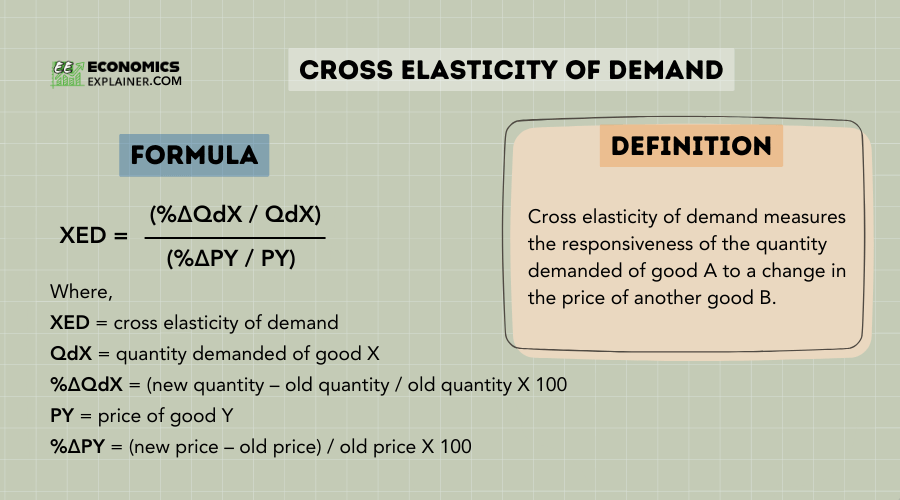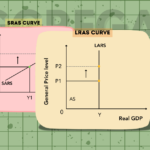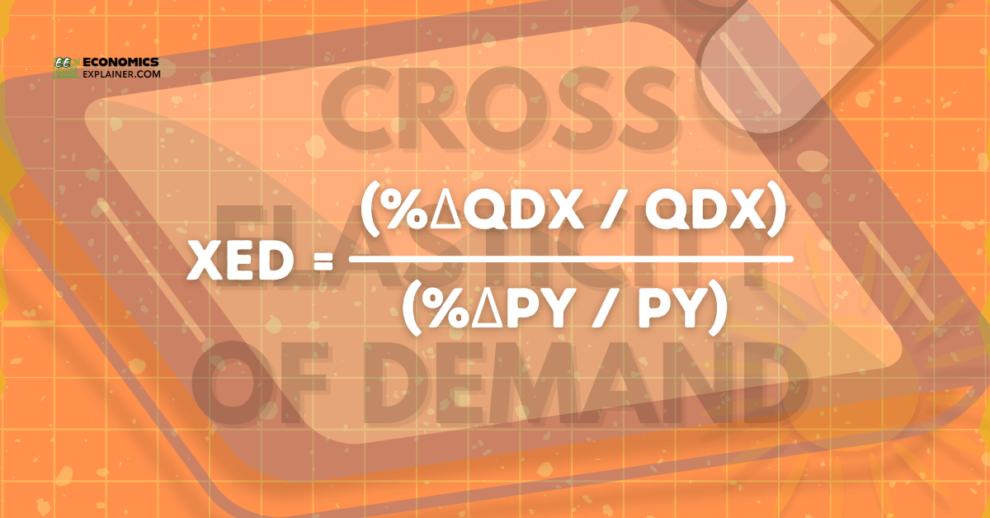Cross elasticity of demand measures the degree to which the quantity demanded of one good responds to a change in the price of another good. It is a valuable tool to gain insights into the complex relationships between different types of goods and services in the market, which helps to understand how they interact and influence each other. Understanding the relationship between different types of goods and services can help determine output and pricing and learn the dynamics of consumer choices and market behavior.
What is the cross-elasticity of demand?
Cross elasticity of demand shows how the quantity demanded for one good is influenced by the changes in the price of another good. The two goods in question can be substitutes, where one replaces the other; complementary, where they are used together; or independent, where they are unrelated to each other.
Cross elasticity of demand measures the responsiveness of the quantity demanded of good A to a change in the price of another good B.
The cross elasticity of demand can have a negative positive or zero value depending on the type of goods being analyzed. Moreover, it varies at different points along the demand curve, showing that the relationship between the goods can change as the price changes.

- What is Price Elasticity of Demand? How To Calculate
- What is Income Elasticity Of Demand? Definition & How To Calculate
Formula
The cross-elasticity of demand (XED) is calculated using the following formula:
XED = (%ΔQdX / QdX) / (%ΔPY / PY)
Where:
XED = cross elasticity of demand
QdX = quantity demanded of good X
%ΔQdX = (new quantity – old quantity / old quantity X 100, representing percentage change in quantity demanded of good X
PY = price of good Y
%ΔPY = (new price – old price) / old price X 100, representing percentage change in price of good Y
Or, alternatively,
XED = (percentage change in quantity demanded of good X) / (percentage change in price of good Y)
Types
- XED is positive for substitute goods, meaning that the demand for good X increases when the price of good Y increases.
- XED is negative for complementary goods, meaning that the demand for good X decreases when the price of Good Y increases.
- XED is zero for independent goods, meaning that the demand for good X is unaffected by changes in the price of good Y.
How to calculate XED (Example)
Let’s say we want to calculate the cross elasticity of demand between the two substitute goods (coffee and tea).
| QdX (Coffee) | PY (Tea) |
|---|---|
| 100 cups | $2 |
| 120 cups | $2.20 |
First, calculate the change in quantity demanded of good X (coffee).
ΔQdX / QdX
(new quantity – old quantity) / old quantity X 100
(120 – 100) / 100 X 100 = 20/100 x 100 = 20%
Second, calculate the change in the price of good Y (Tea).
(ΔPY / PY) × 100
(new price – old price) / old price X 100
(2.20 -2 / 20) X 100 = 10%
Putting the values in the formula,
XED = (ΔQdX / QdX) × 100 / (ΔPY / PY) × 100
= 20 / 10
= 2
In short, we can summarize it using the following points:
- Initial quantity demanded of coffee = 100 cups per day
- New quantity demanded of coffee = 120 cups per day (20% increase)
- Initial price of tea = $2 per cup
- New price of tea = $2.20 per cup (10% increase)
The cross elasticity of demand between tea and coffee is 2. This means that tea and coffee are substitute goods, and for every 1% increase in the price of tea (PY), the demand for coffee (QdX) increases by 2%.
Limitations
- XED is limited to two goods only and can be difficult to quantify.
- XED assumes that no external factors influence or affect demand other than the change in the price of the related good. However, in reality, there are many factors that affect the demand for related goods.
- XED assumes the rational behavior of consumers; however, consumers often lack complete information and are influenced by biases and emotions while making their decisions.
- XED assumes a linear relationship between the price of one good and the demand for another good. However, in the real world, relationships between prices and demand for different goods are often non-linear.
Conclusion
In conclusion, cross elasticity of demand (XED) is a crucial tool to explore and understand the relationships between different types of goods. It shows how changes in the price of one good lead to changes in the quantity demanded of another good. The understanding of the concept has important implications for businesses to make more effective decisions about production and pricing of goods and services.
- Cross elasticity of demand measures the percentage change in the quantity demanded of one good compared to the percentage change in the price of another good.
- The value of cross elasticity of demand is positive for substitute goods, negative for complementary goods, and zero for independent goods.
- Understanding the cross elasticity of demand helps better examine consumer and market behavior and make more effective decisions regarding production and pricing of goods and services.



















Add Comment